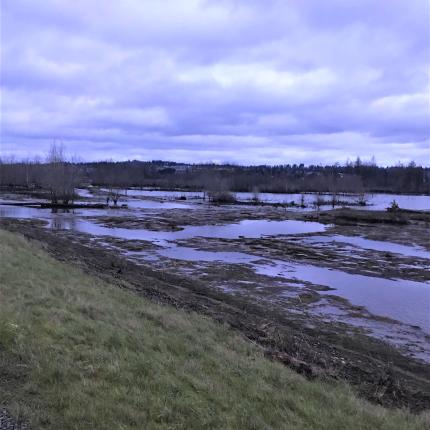ARCHIVED NEWS RELEASE
This document is provided for archival purposes only. Archived documents
do not reflect current WDFW regulations or policy and may contain factual
inaccuracies.
News release Dec. 28, 2020
Fenner Yarborough, 425-775-1311
Rachel Blomker, 360-701-3101
MILL CREEK – The Washington Department of Fish and Wildlife (WDFW) and Snohomish County are working together to provide more public access for waterfowl hunting and other outdoor recreation in the lower Snohomish Delta.

Smith Island, a 320-acre property owned by Snohomish County within the Snohomish River estuary near Everett, is now open to the public from Oct. 1 to Feb. 28 annually. For site details, including information about site rules, parking, boat access, and safety zones, visit WDFW’s website.
Waterfowl hunters must follow season dates listed in the Washington Game Bird Hunting Regulations. The regular season for duck and goose hunting continues through Jan. 31, 2021.
“This partnership is a great example of agencies working together to achieve multiple goals,” said Brendan Brokes, WDFW’s North Puget Sound Regional Director. “Smith Island offers great waterfowl hunting opportunity close to Everett, while providing high-quality habitat for Snohomish river system salmon. We look forward to working with local governments on more partnerships in the future.”
In 2018, Smith Island underwent a habitat restoration project that re-established historic tidal marshlands to provide critical habitat for threatened Chinook salmon. In addition to improved salmon habitat, several wildlife species benefit from restored estuary, including waterfowl and shorebirds.
“As a fisheries biologist, the restoration of Smith Island has been a project very close to my heart for decades,” said Dave Somers, Snohomish County Executive. “Now that we’ve reached this stage, our long-term partnership with WDFW is critical. Both residents and visitors will now have more recreational opportunities on Smith Island, giving our local economy a boost.”
Washington offers a wide variety of waterfowl hunting options, ranging from deep saltwater areas to dry land agricultural fields. The many types of habitat in the state support a variety of waterfowl ranging from mallards, Canada geese, and snow geese to sea ducks and brant. Find more information about waterfowl seasons and non-toxic shot requirements on WDFW’s website.
WDFW is the primary state agency tasked with preserving, protecting, and perpetuating fish and wildlife and ecosystems, while providing sustainable fishing and hunting opportunities.